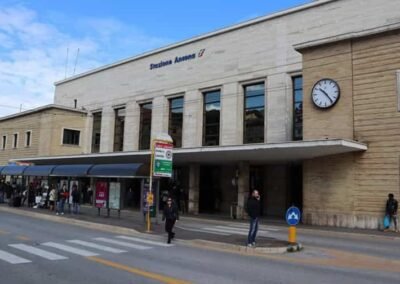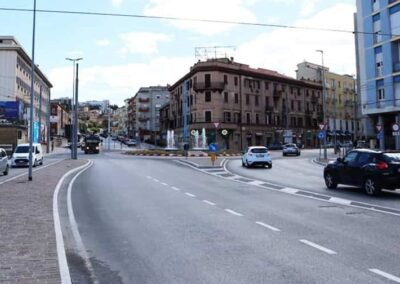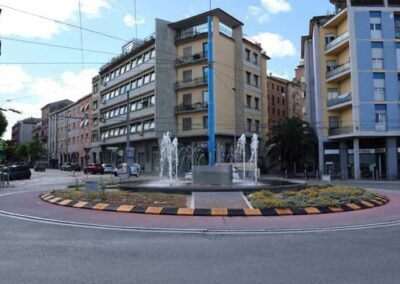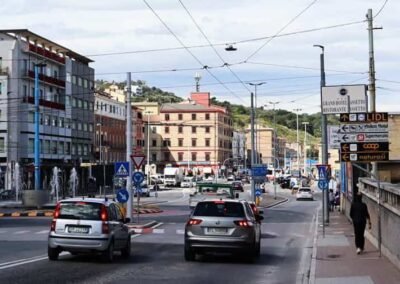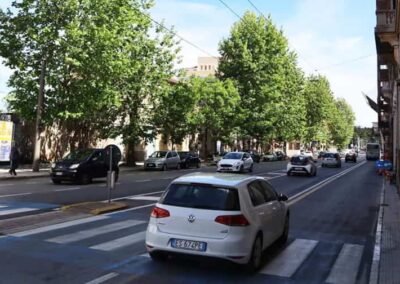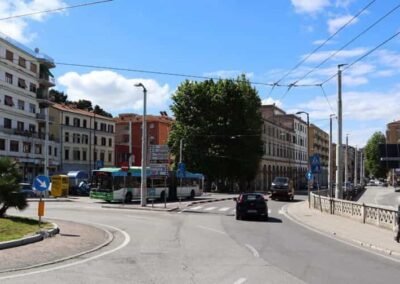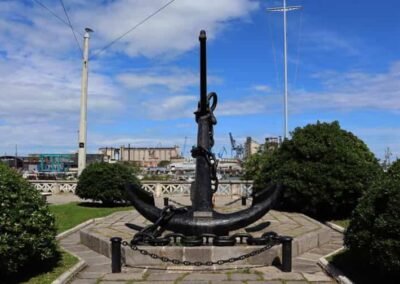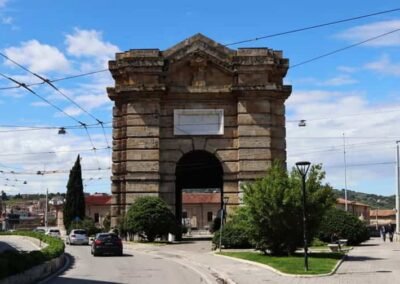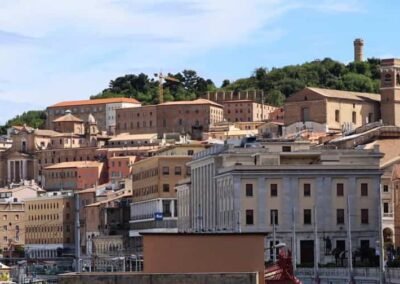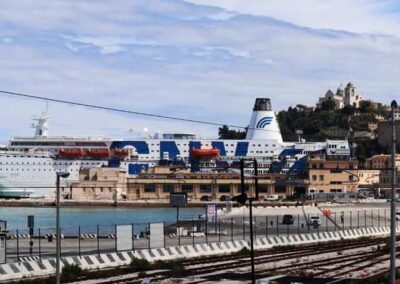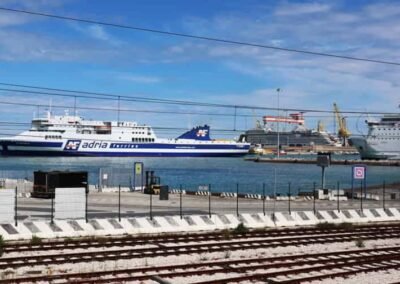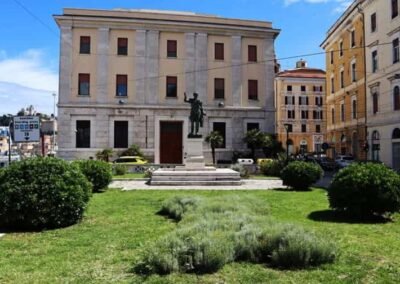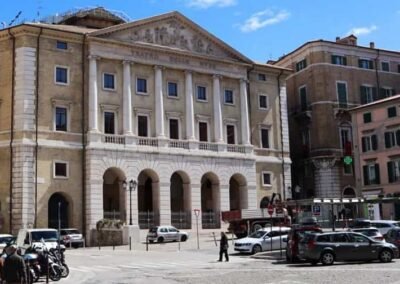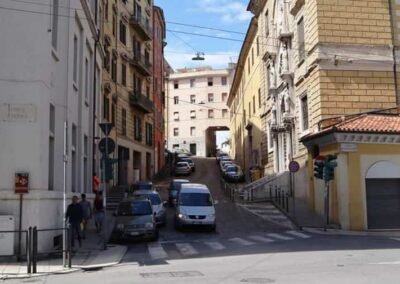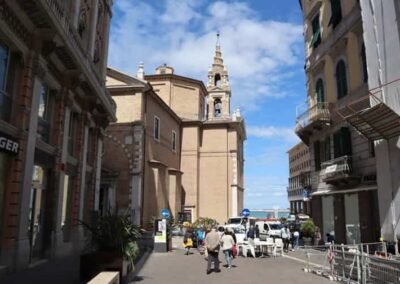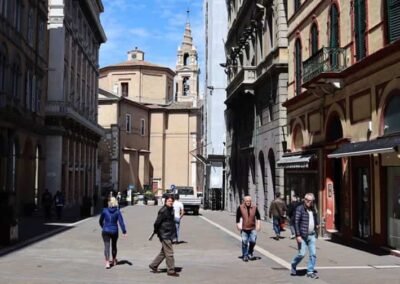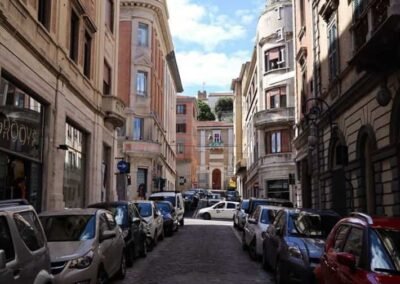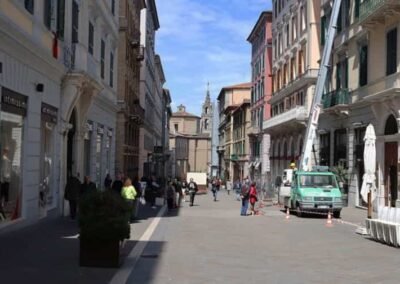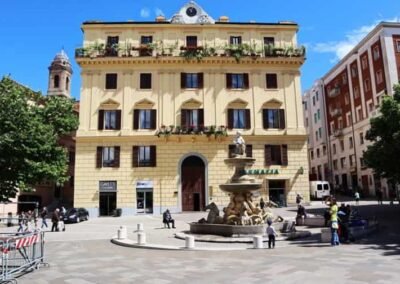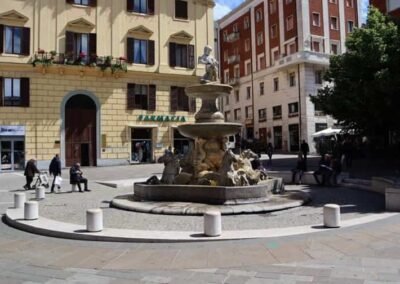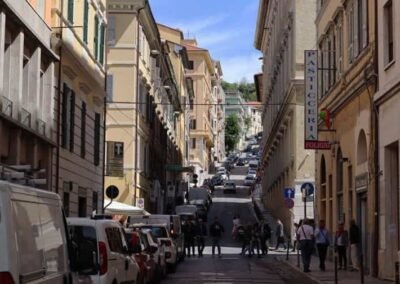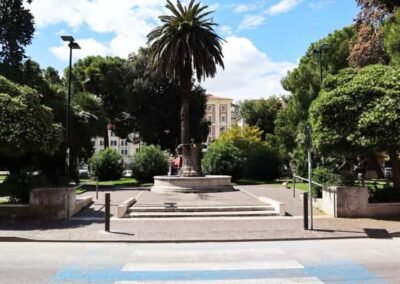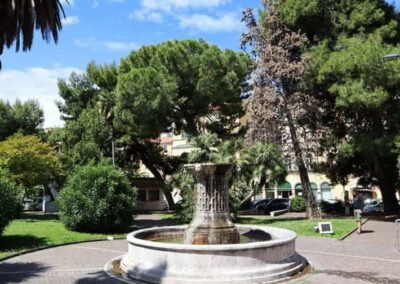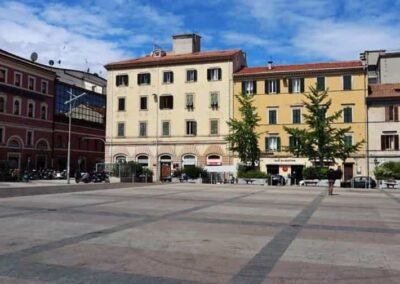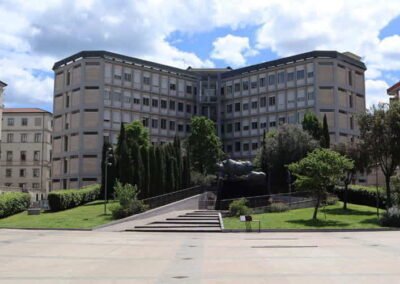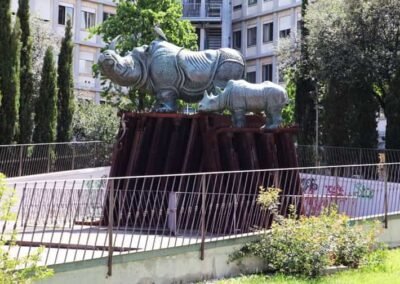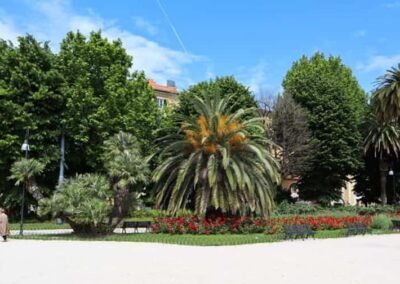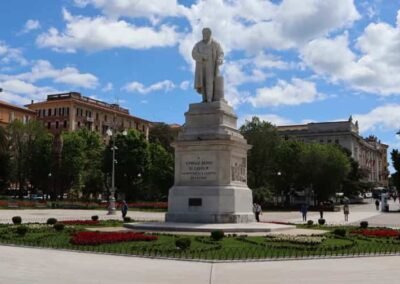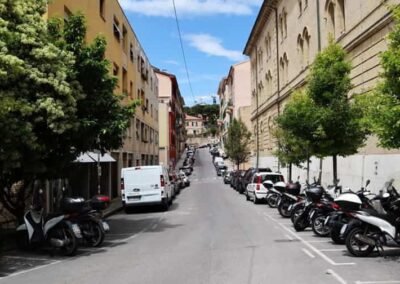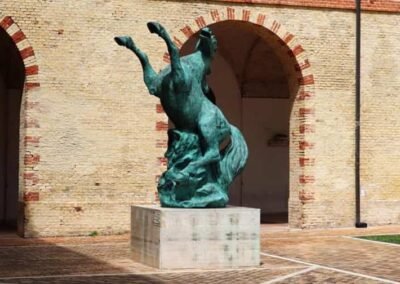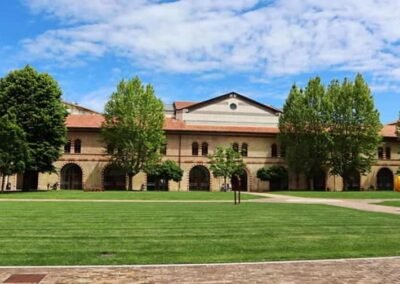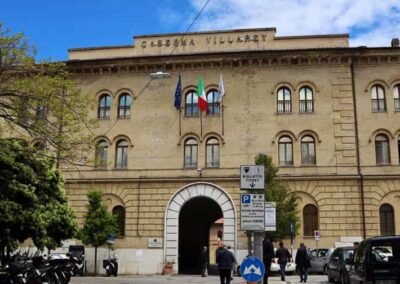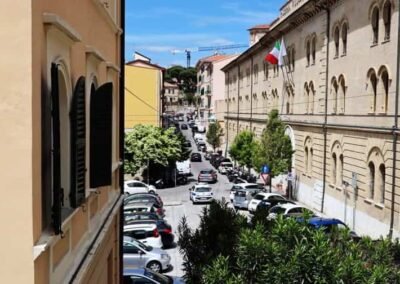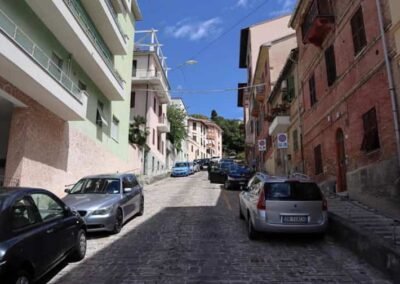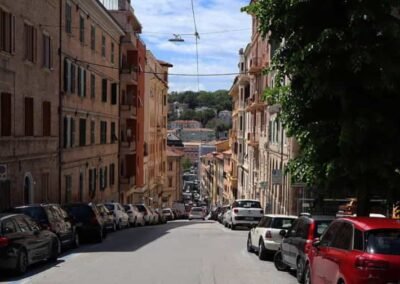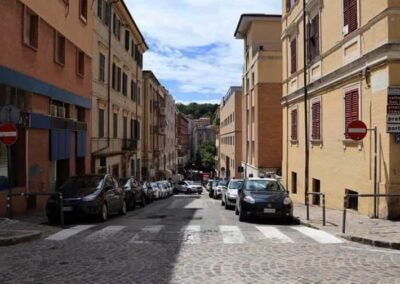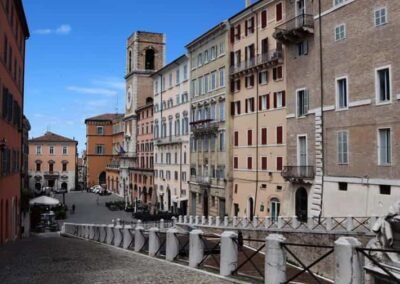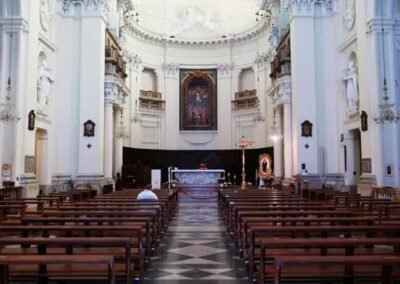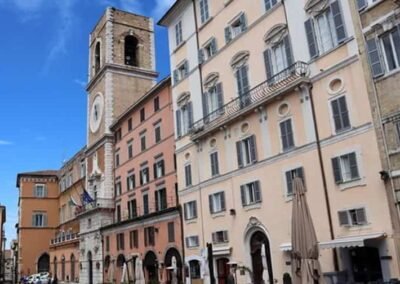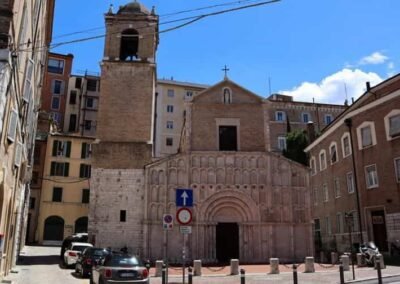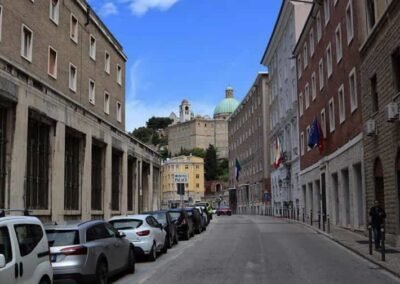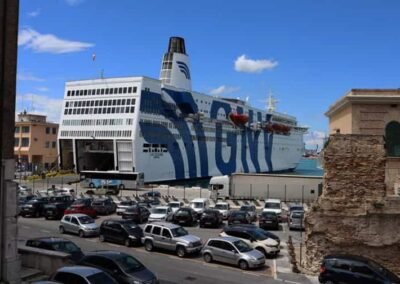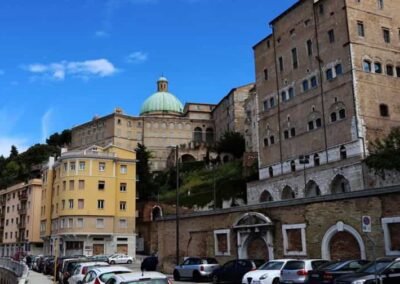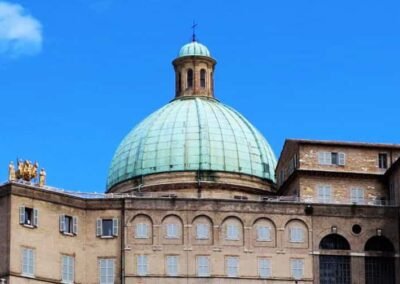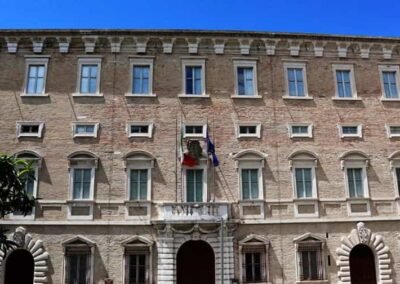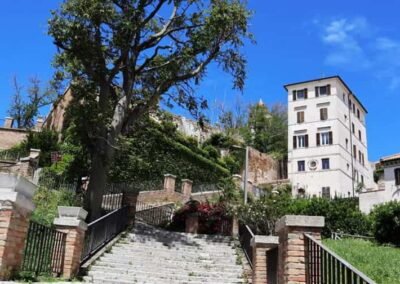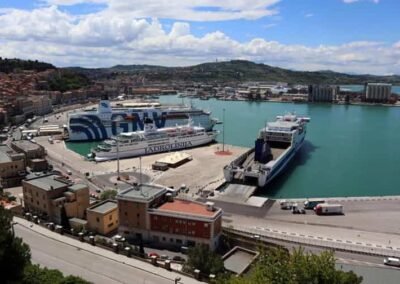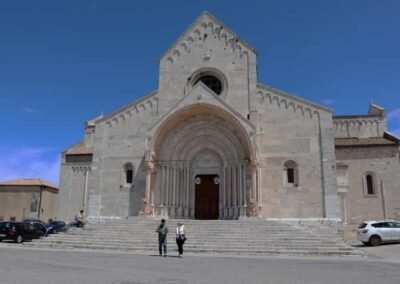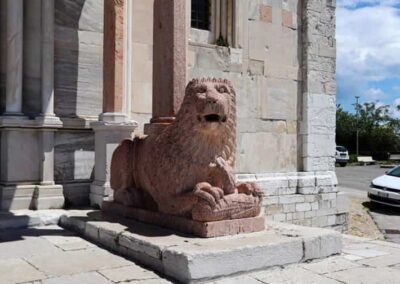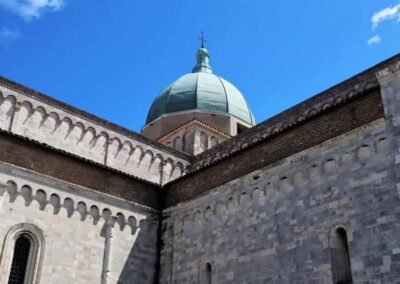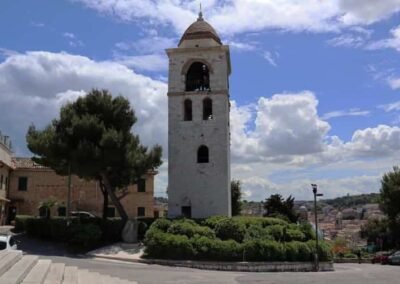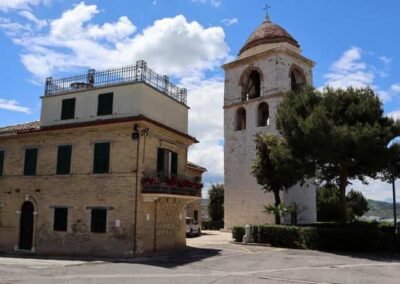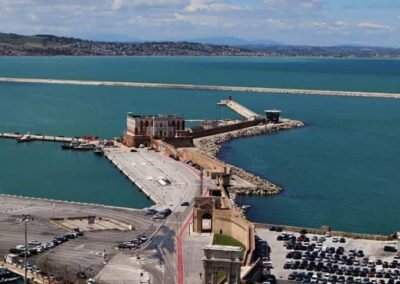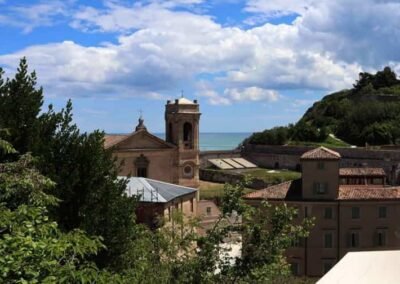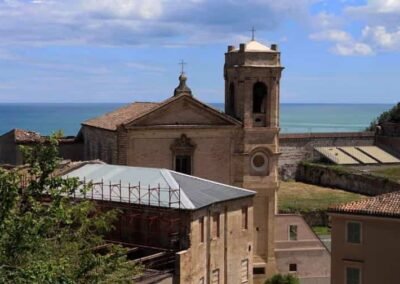HOME
THE REGIONS OF ITALY
PLACES IN ITALY
Italy in Photos
Via XXIX Settembre, 60122 Ancona, Italy (May 2019)
Ancona
Ancona is a vibrant port city located on the Adriatic coast of the Marche region in central Italy. It stands as both the regional capital and a significant maritime gateway that connects Italy with countries across the Adriatic Sea, such as Greece, Croatia, and Albania. With a history that stretches back more than two thousand years, Ancona is a place where the past and present coexist harmoniously, creating a city rich in culture, art, and tradition.
The origins of Ancona date to around the 4th century BC, when it was founded by Greek settlers from Syracuse. They named it “Ankon,” meaning “elbow,” because of the unique shape of the coastline that bends like an arm around its natural harbour. This strategic position soon made Ancona an important port in the ancient world, attracting traders, sailors, and later the Romans, who expanded and fortified the city. Traces of this long history can still be seen today in its Roman ruins, medieval churches, and Renaissance architecture.
Modern Ancona blends its historical heritage with a dynamic, contemporary atmosphere. The city’s port remains one of the busiest in Italy, serving as a major hub for passenger ferries and commercial trade. Yet beyond its industrial activity, Ancona offers a charming and authentic Italian experience, less crowded than the more famous tourist destinations. Its historic centre, perched on the slopes of Monte Guasco, invites visitors to explore winding streets, hidden courtyards, and panoramic viewpoints that open onto the Adriatic Sea.
One of the city’s most striking landmarks is the Cathedral of San Ciriaco, a masterpiece of Romanesque architecture that dominates the skyline from its hilltop position. Nearby, the Arch of Trajan, built in the second century AD, stands as a reminder of Ancona’s imperial past and its importance to the Roman Empire. The Mole Vanvitelliana, a pentagonal fortress built in the eighteenth century, now serves as a cultural centre that hosts exhibitions, concerts, and festivals throughout the year.
Ancona is also a gateway to the natural beauty of the Conero Riviera, a stretch of coastline known for its white cliffs, turquoise waters, and hidden coves. This combination of sea, history, and culture gives Ancona a distinct character that captures the essence of the Italian Adriatic. Whether arriving by sea or exploring from land, visitors to Ancona encounter a city that is both ancient and alive, proud of its heritage yet open to the future.
Worth a Visit
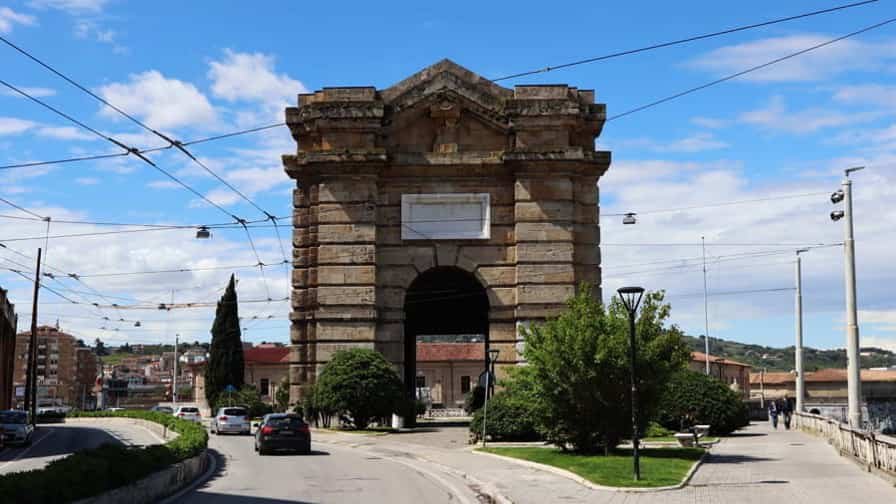
Porta Pia is a distinguished architectural and historical monument located in the coastal city of Ancona, Italy. Built in the late 18th century, this elegant city gate stands as one of the most iconic symbols of Ancona’s urban landscape and a testament to the artistic and civic ambitions of its era. Situated near the entrance to the old city centre, Porta Pia once served as a principal gateway into the city, both a ceremonial entrance and a practical point of access for those arriving by land or sea. Today, it remains a prominent landmark, appreciated for its classical beauty, historical significance, and cultural value. Commissioned by Pope Pius VI, Porta Pia was constructed between 1787 and 1789 and designed by the renowned Italian architect Filippo Marchionni
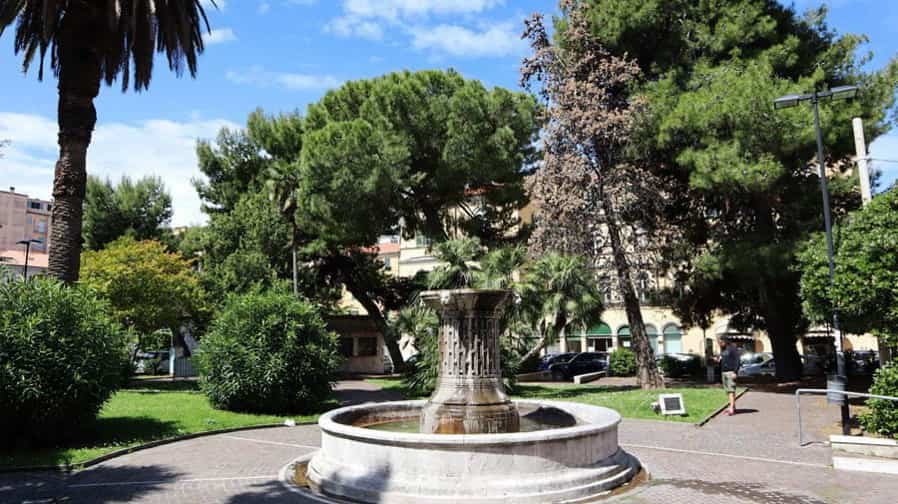
The Giardino Pubblico Piazza Stamira, or Stamira Public Garden, is a charming green space located in the heart of Ancona, Italy. Nestled within the bustling urban environment of the city, this public garden serves as a peaceful retreat for residents and visitors alike. Named after Stamira, a local heroine who played a significant role in Ancona’s defence during the 12th century, the garden is not only a place of relaxation and beauty but also a site rich in local history and civic pride. Situated near the central Piazza Stamira, the garden occupies a prominent location that makes it easily accessible from various parts of the city.
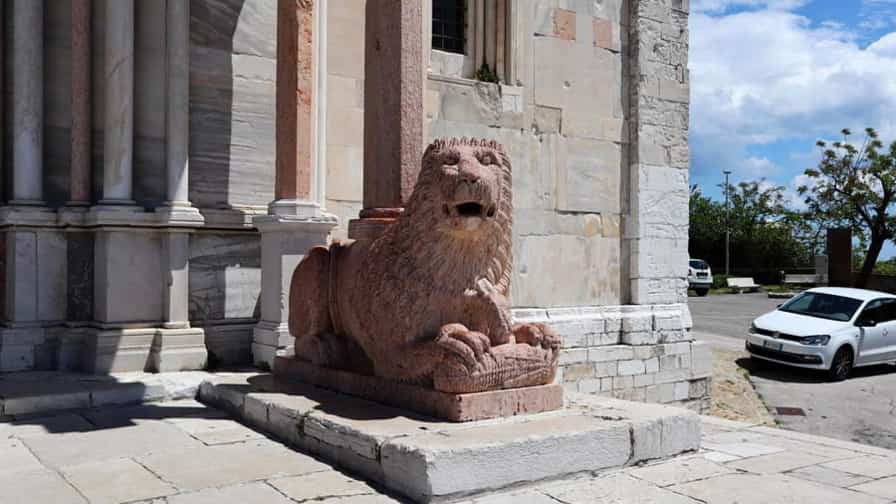
The Piazzale del Duomo in Ancona is a striking and historically rich open space that serves as the dramatic forecourt to one of the city’s most important landmarks, the Cathedral of San Ciriaco. Perched on the summit of Monte Guasco, this panoramic square offers breath-taking views over the Adriatic Sea, the city of Ancona, and the surrounding hills. It is a place where history, architecture, and landscape converge, creating a deeply atmospheric and symbolic setting that captures the essence of Ancona’s identity. At the heart of the Piazzale is the Duomo di San Ciriaco, a magnificent Romanesque-Gothic cathedral that has stood for centuries as both a religious and civic symbol of the city.
Photo Gallery of Walk 1 – Via Flaminia to Piazza Camillo Benso di Cavour
Approximately 2.65 km – 1.65 miles
The walk starts in – Via Flaminia – Via Guglielmo Marconi – Via XXIX Settembre – Via dell’Appannaggio – Piazza della Repubblica – Largo Sacramento – Parrocchia Del Sacramento, Piazza J. F. Kennedy – Via Enrico Cialdini – Corso Giuseppe Garibaldi – Via Giacomo Leopardi – Corso Giuseppe Garibaldi – Piazza Roma – Fontana del Calamo, Piazza Roma – Corso Giuseppe Garibaldi – Via Castelfidardo – Giardino Pubblico Piazza Stamira – Via Palestro – walk back to Corso Giuseppe Garibald – Piazza Camillo Benso di Cavour
Photo Gallery of Walk 2 – Via Indipendenza to Piazzale del Duomo
Approximately 1.65 km – 1.04 miles
The walk starts in – Via Indipendenza – Caserma Villarey, Piazzale Martelli Raffaele – Via Villarey -Via Goito – Via delle Cavorchie – Via Giacomo Matteotti – Piazza del Plebiscito – Chiesa di San Domenico, Piazza del Plebiscito – Piazza del Plebiscito – Via Catena – Chiesa di Santa Maria della Piazza, Piazza Santa Maria – Lungomare Luigi Vanvitelli – take lift up to Via Gabriele Ferretti – Scalone Nappi – Piazzale del
COPYRIGHT © 2018-2025 ITALY IN PHOTOS - ALL RIGHTS RESERVED
